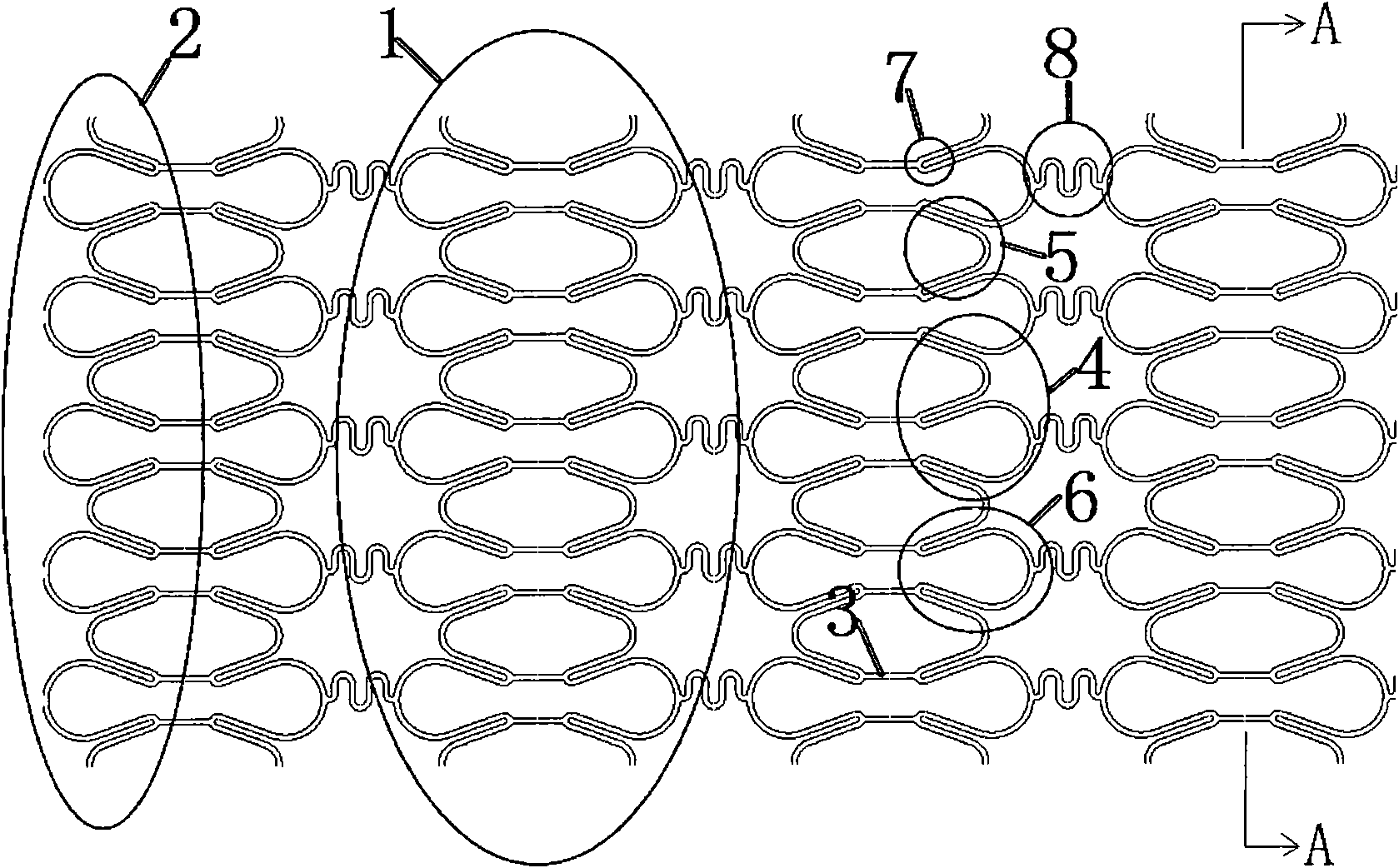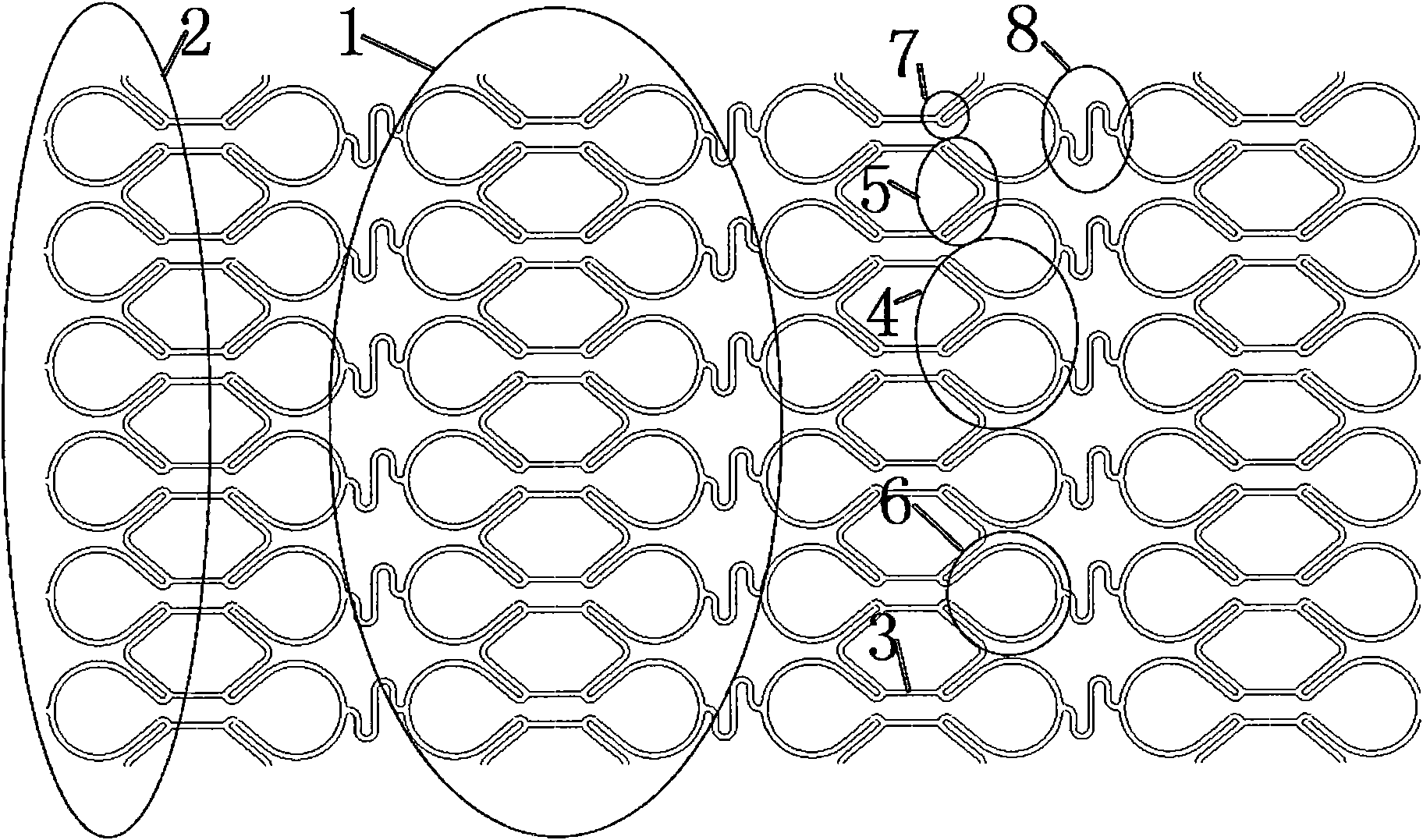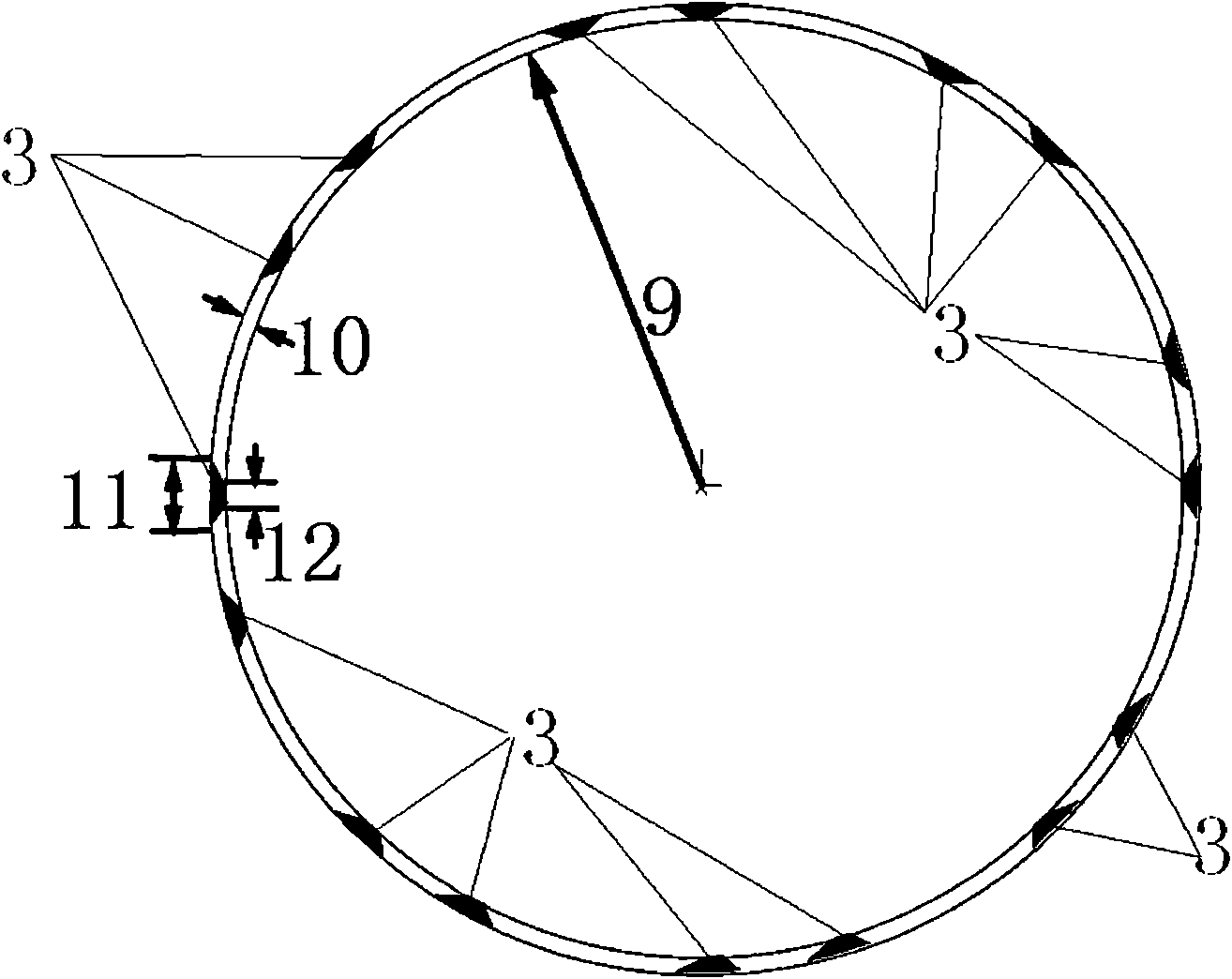Netty circular tube type intravascular stent
A technology of inner stent and round tube, which is applied in the field of intravascular stent and medical equipment, can solve the problems of lack of stent support mechanical performance analysis, rod fracture, stent structure expansion and instability, etc., and achieve excellent axial flexibility, stress The effect of weak injury and good hemodynamic status
- Summary
- Abstract
- Description
- Claims
- Application Information
AI Technical Summary
Problems solved by technology
Method used
Image
Examples
Embodiment 1
[0025] A net-shaped circular tube-type intravascular stent is laser-engraved from AZ31 magnesium alloy thin-walled circular tubes. The magnesium alloy material in the gaps of the stent pattern structure grid is removed by laser cutting. The radial direction of the circular tube needs to be cut and removed. The vertical direction of the laser beam is 56.3°, and finally forms a net-like circular tube structure. figure 1 It is a schematic diagram of the planar expansion of the mesh circular tube stent, such as figure 1 As shown, the intravascular stent is composed of four circumferential rings 1 distributed along the axial direction, and every two adjacent circumferential rings 1 are connected by a plurality of M-shaped connecting rods 8 . Each circumferential ring 1 includes two mirror-symmetric grid unit groups 2, the grid unit groups in the ring are connected by a plurality of short straight rods 3, and the grid unit group 2 is composed of 8 grid units 4 that are uniform in th...
Embodiment 2
[0030] see figure 2 , a mesh-shaped round-tube intravascular stent is laser-engraved from an AZ91 magnesium alloy thin-walled round tube. The magnesium alloy material in the grid gap of the stent pattern structure is removed by laser cutting. The radial direction of the circumference of the round tube needs to be cut and removed. It is 26.6° to the vertical direction of the laser beam, and finally forms a net-like circular tube structure. It consists of six circumferential rings 1 distributed along the axial direction, and every two adjacent circumferential rings 1 are connected by S connecting rods 8 . Each circumferential ring 1 includes two mirror-symmetric grid unit groups 2 , and the connections between the grid unit groups in the ring are all short straight rods 3 . The grid unit group 2 is composed of 12 grid units 4 arranged evenly in the circumferential direction, and the number of grid units 4 is determined according to the clinical use requirements of the stent. ...
Embodiment 3
[0035] A mesh-like circular tube-type intravascular stent of this embodiment is laser-engraved from an AM60 magnesium alloy thin-walled circular tube. The magnesium alloy material in the grid gap of the stent pattern structure is removed by laser cutting. The circumference of the part of the circular tube that needs to be cut off The radial direction is 45° to the vertical direction of the laser beam, and finally forms a networked circular tube structure. It consists of three circumferential rings 1 distributed in the axial direction, and every two adjacent circumferential rings 1 are connected by S connecting rods 8 . Each circumferential ring 1 includes two mirror-symmetric grid unit groups 2 , and the connections between the grid unit groups in the ring are all short straight rods 3 . The grid unit group 2 is composed of 10 grid units 4 arranged evenly in the circumferential direction, and the number of grid units 4 is determined according to the clinical use requirements o...
PUM
 Login to View More
Login to View More Abstract
Description
Claims
Application Information
 Login to View More
Login to View More - R&D
- Intellectual Property
- Life Sciences
- Materials
- Tech Scout
- Unparalleled Data Quality
- Higher Quality Content
- 60% Fewer Hallucinations
Browse by: Latest US Patents, China's latest patents, Technical Efficacy Thesaurus, Application Domain, Technology Topic, Popular Technical Reports.
© 2025 PatSnap. All rights reserved.Legal|Privacy policy|Modern Slavery Act Transparency Statement|Sitemap|About US| Contact US: help@patsnap.com



